Digital Camera Home >
Tough/Waterproof Camera Shootout 2013
Tough/Waterproof Camera Shootout 2013: Image and Video Quality
Six tough/waterproof cameras compared
Survival of the Fittest:
2013 Best Tough/Waterproof Camera Shootout
Underwater Experience

Unless you want to tote along an underwater housing for your primary camera (assuming there's one available for your model), a compact waterproof camera is your only route for capturing magic moments in the depths of your local pool or all the way to photographing stingrays along the Cayman Wall. In our real-world testing, our primary focus was to discover if the six models could take good -- if not excellent -- pictures underwater, if they were easy to operate while submerged, and how they held up to the rigors of such shooting.
Two of us -- Dave Pardue and William Brawley -- headed out to a nearby pool on a bright, sunny Georgia summer day. We took along with a willing accomplice, Dave's 7-year-old daughter looking to earn extra Barbie money, and a few extra props we thought might give some of the shots additional visual interest.
It seemed like an easy enough assignment while loading up, but turned into quite a bit more than we'd bargained for, namely due to issues with buoyancy (people and props) and the difficulty in keeping track of six different cameras in the center of the pool (we actually had to build a quick rig to help us with the task). In the end, we were able to able to solve the issues and gather the shots and video we needed to demonstrate how each waterproof camera performed while in their natural element.
Shooting in Auto Mode
To test each camera's underwater shooting abilities, we first set each camera's settings to Auto. After all, most people are likely to set the camera to Auto while on land and leave it there when they dive into the ocean or pool. (If you're among those who'd take the time to change modes and settings before taking the plunge, you may prefer to look at images taken in the cameras' underwater mode which are further below. Although some cameras fared better in Auto than underwater mode, believe it or not!) Ready to get wet?
Canon D20 |
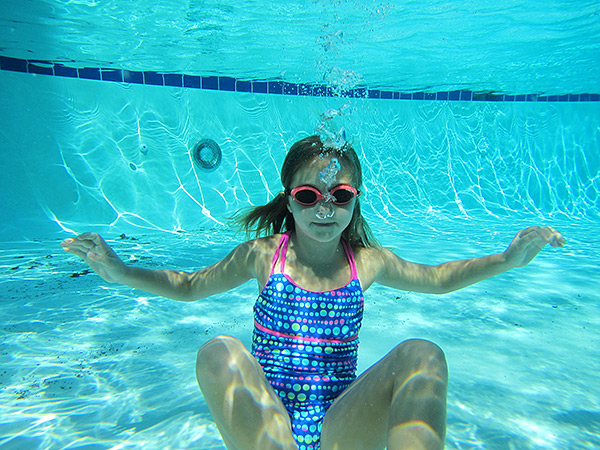 |
| Auto exposure, ISO 100, 1/200s, f/8 |
As we mentioned in our 2012 Underwater Shootout, shooting the Canon D20 underwater is almost as easy and comfortable as taking photos in your living room. The D20 ranked first in last year's face-off thanks to its great underwater image quality. The camera delivered the most consistently good images -- with perhaps the most accurate color -- submerged in the pool . It was also very easy to use. You'll soon see that we don't recommend basic camera Auto for all of these cameras, but we can very much recommend it for the D20 in most shooting situations. It's Auto mode simply works well. |
Nikon AW110 |
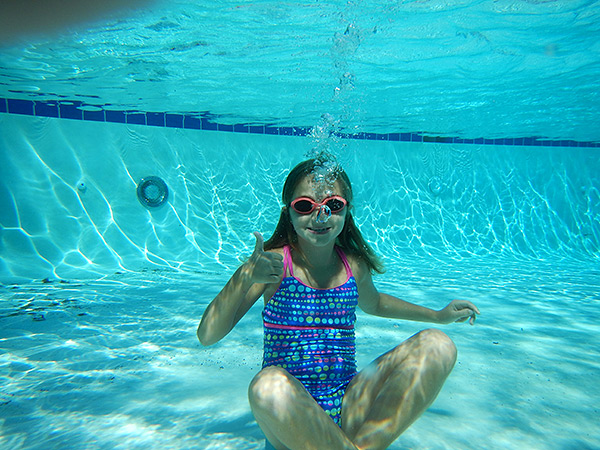 |
| Auto exposure, ISO 125, 1/1250s, f/3.9 |
The image shown here from the Nikon AW110 demonstrates the camera's good exposure and accurate colors. It is interesting to note that in the camera's Auto mode, the AW110 chose to shoot at a much faster shutter speed than all other cameras, and at a wider aperture than most -- settings that we might choose if we were setting the exposure ourselves to freeze the action. This stands in stark contrast to the Panasonic TS5, which chose a 1/160s shutter speed and f/10 aperture in Auto.
|
Olympus TG-2 |
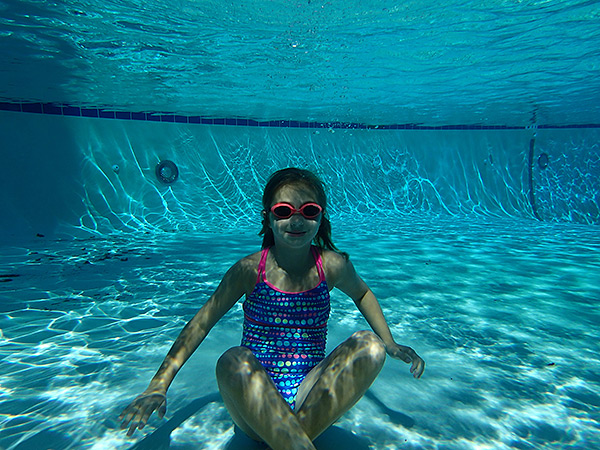 |
| Auto exposure, ISO 100, 1/320s, f/8 |
|
The Olympus TG-2 follows in the footsteps of its predecessor in its tendency towards underexposing images while in Auto, especially with underwater images. It does, however, yield images with good saturation and contrast, and you can certainly work with the image in post-processing. If you decide to buy this camera we suggest not shooting in Auto mode while underwater, and instead recommend that you use Program or one of the four underwater modes which all allow exposure compensation to get brighter images than the camera will achieve while in Auto.
|
Panasonic TS5 |
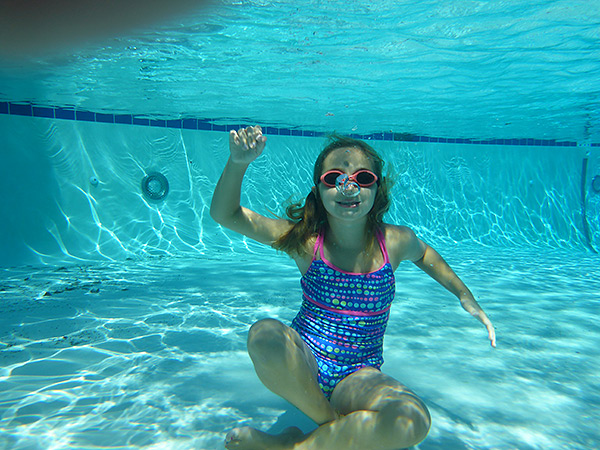 |
| Auto exposure, ISO 100, 1/160s, f/10 |
|
As noted above in the AW110 commentary, the Panasonic TS5 at camera auto chose the smallest aperture and slowest shutter speed of the group, which would tend to produce less crisp subjects if they are moving quickly. But the image itself is pleasing in terms of color and exposure, so using Auto might be OK if you're looking for a greater depth of field and aren't worried about trying to catch fish whizzing by. You may note the finger protruding into the image at the top left. Four of the cameras we tested have the lens positioned at the top left of the camera, which happens to be where we like our index fingers to reside while steadying for a shot. We noticed many times with three of these cameras (AW110, TS5, TX30) that our fingers would slide just slightly forward and often ruin an otherwise good shot. We wish camera manufacturers would consider putting the lens in the center of underwater cameras -- like Olympus and Pentax did -- where it belongs. The D20 avoids the issue via its finger ledge that keeps your digits out of the shot.
|
Pentax WG-3 |
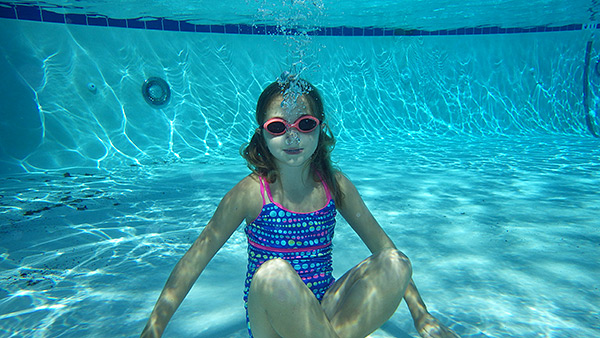 |
| Auto exposure, ISO 125, 1/320s, f/7.9 (16:9 aspect ratio) |
|
The Pentax WG-3 ships with a default aspect ratio of 16:9, where all others in this competition default to 4:3. So for many of these comparisons we shot at 16:9. This is great for a cinematic look, but we still prefer 4:3 for most photos. In our laboratory image quality comparisons, the WG-3 fared slightly lower than average for overall quality, with more noise and less detail than some. The above real-world image is a bit underexposed and not quite as vibrant as some of the others. But then, as you'll see in our final conclusion, we think the WG-3 is geared for buyers whose No. 1 priority may not be the best image quality. The camera takes decent shots, but its strength is its rugged build and aggressive styling.
|
Sony TX30 |
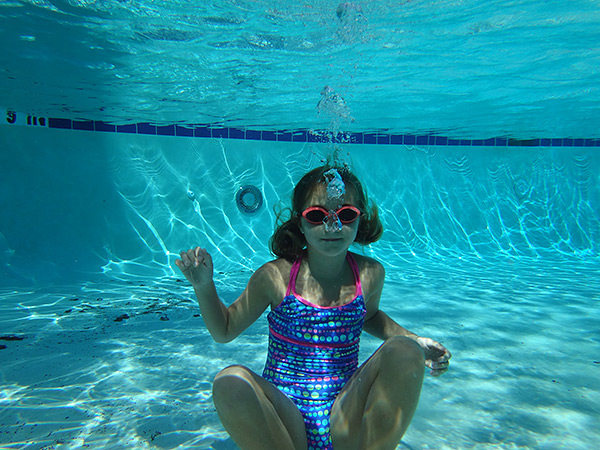 |
| Intelligent Auto exposure, ISO 80, 1/800s, f/4.5 |
The Sony TX30 may be a good choice for just the right type of shooter, but it doesn't pass muster with us as an underwater camera. For one thing, the screen is almost impossible to see underwater. And that means it's both difficult to see if your exposure is correct and to make sure you're framing the shot correctly. As for our real-world image quality analysis, the TX30 tended to underexpose a bit in Intelligent Auto, so we'd recommend you set it to Program mode (though not easy to use underwater!) and use exposure compensation to get the right exposure. |
Shooting in Underwater Mode
Each of these waterproof cameras features some form of special underwater mode that's designed to enhance photos shot at greater depths where colors are often muted and the white balance has usually shifted towards greens. As a result, some of these cameras pump up the reds and take other measures in their attempts to produce a nice exposure and realistic colors. Of course, some succeed better than others.
Since we've shown a few people shots, we thought it'd be interesting to submerge treasure chests filled with Spanish Doubloons to give some Caribbean flair to the test. We had to go to great lengths to achieve this, as we discovered the chests -- despite their substantial weight and the pirate booty -- wouldn't sink on their own. You can just spy the 15-pound weight we had to add to the treasure chest on the left, roped to the back side. Let's take a look at the results of the six cameras in their special underwater modes.
Canon D20 - Easy Mode Underwater |
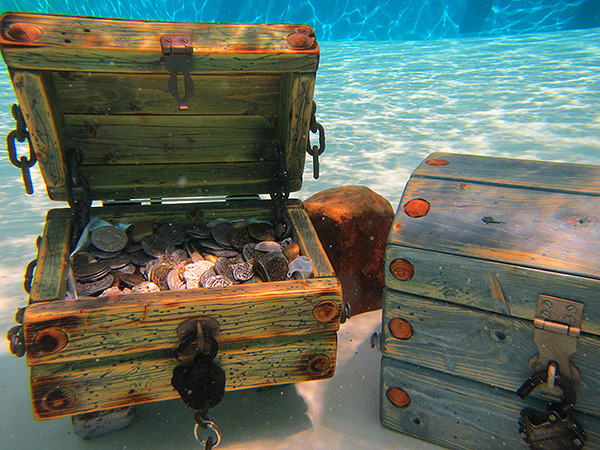 |
| Easy mode Underwater, ISO 200, 1/400s, f/8 |
|
The Canon D20's "Easy" Underwater mode enhances the warmer colors such as reds and yellows, and thus produces the warmest images of the six cameras. This effect will likely be better appreciated at deeper depths than my local pool allowed. If you're 30 feet below in the ocean, this setting would be recommended, but for photographing people in a pool you'll likely get truer colors sticking to Auto mode as displayed in the tables above.
|
Nikon AW110 - Scene Mode Underwater |
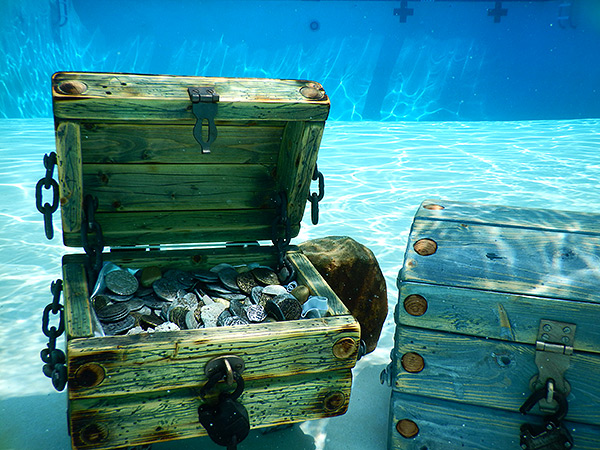 |
| Scene mode Underwater, ISO 125, 1/1000s, f/3.9 |
|
Images taken with the Nikon AW110 in Underwater mode proved to be flat compared to the some of the other waterproof cameras we tested. The AW110's photos demonstrated limited color saturation and failed to bring out the warmer colors we wanted to see. This tendency would only get worse at lower depths, so we'd recommend experimenting with alternate modes and exposures to get the results you want when diving with this camera.
|
Olympus TG-2 - Scene Mode Underwater Snapshot |
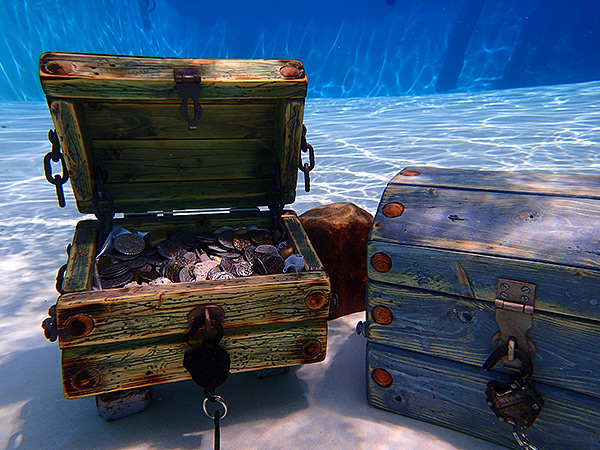 |
| Scene mode Underwater Snapshot, ISO 100, 1/320s, f/8 |
The TG-2 offers four underwater modes, so we selected the Underwater Snapshot mode for this test, as it's meant for beach and pool. As with our other underwater testing, the TG-2 consistently produced underexposed images with higher contrast, and the Underwater Snapshot mode is no exception. In addition this mode pumps blues much more than was actually in the scene, though we prefer its color underwater to some of the other cameras in this group. Fortunately, all the TG-2's underwater modes do allow exposure compensation, but there are no adjustments for color, saturation or contrast, however there is a Shadow Adjust control to lighten shadows.
|
Panasonic TS5 - Advanced Underwater Mode |
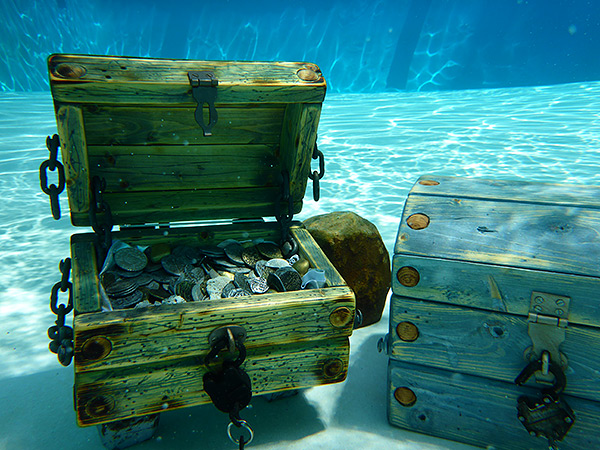 |
| Advanced Underwater mode, ISO 100, 1/1300s, f/3.3 |
|
The Panasonic TS5 typically took images in Advanced Underwater mode that were fairly flat, with somewhat muted colors and an overall image quality that was not as pleasing as some of the others. The highlights appear a bit overblown, and the colors shift towards aqua, which would not be overly helpful while diving. We therefore suggest trying other modes or settings while underwater with this camera. For example, Beach and Snorkeling mode may work better, and there is a Color Reproduction option that boosts red for underwater shots.
|
Pentax WG-3 - Picture Mode Underwater |
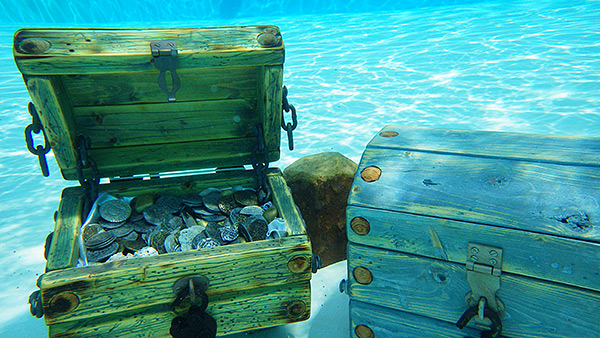 |
| Picture mode Underwater, ISO 250, 1/400s, f/7.9 (16:9 aspect ratio) |
Again showing you the default picture aspect ratio of 16:9, the WG-3 tended to deliver the lowest quality images of the group in most situations, including here in its only underwater picture mode. This particular image is washed out, and the hue shifts far towards green. As with some of the others, we suggest avoiding this mode and experimenting with other options.
|
Sony TX30 - Exposure Mode Underwater |
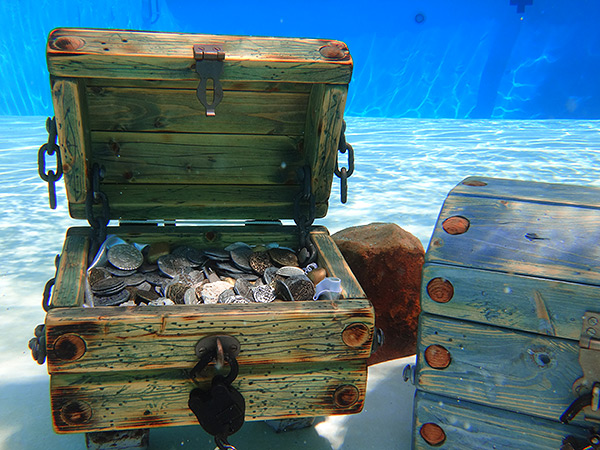 |
| Exposure mode Underwater, ISO 80, 1/640s, f/4.5 |
We have spent a good bit of time in other sections talking about how and why the TX30 is not a good option for serious underwater photography, but it paradoxically produced the best image in special underwater mode, delivering a nice exposure, good contrast without going overboard, and accurate colors to the treasure chest scene. The blues of the pool border are a bit oversaturated, but still a pleasing image overall. Clicking on the image will give you the full resolution version, which shows that the image is a bit soft compared to some others, but this could be the result of a focusing issue. If the camera handled better and featured an LCD touchscreen that was more usable (and viewable) underwater, it may have been among our top picks this year. |
Overall Underwater Still Image Ranking |
#1
Canon D20 |
#2
Nikon AW110 |
#3
Sony TX30 |
#4
Olympus TG-2 |
#5
Panasonic TS5 |
#6
Pentax WG-3 |
|
The D20 images are good in all three of our underwater still tests, with both people and our diving props, making it the clear winner here. The TX30 may have taken second just on the merit of its underwater mode doing so well, but the considerable difficulty to operate it underwater shifted it to third. The AW110 is the only other model that produced mostly pleasing results underwater, at least in the two basic modes we chose for the tests. If you don't mind experimenting with camera settings to get the best underwater exposure, then the TG-2 may also deliver the goods (or the pirate treasure!).
|
Underwater Video Performance
Video continues to grow in popularity, and using still cameras to shoot video is both an easy and viable option which has been embraced by novices and professionals alike. The portability and ease of use make it tempting to leave the camcorder behind and just tote along one camera for both jobs, sparing you extra weight and hassle.
Below we give you two different samples of using these waterproof cameras to shoot video underwater. Clicking on the images will download the original files for each so that you can get a real sense of what they do well -- and don't do well. All clips were shot in the now common Full HD resolution of 1920 x 1080, with four of the cameras shooting in MOV format (D20, AW110, TG2, WG-3) as default. We tested the other two cameras -- the TS5 and TX30 -- in both AVCHD and MP4 video formats. AVCHD movies generally provide better quality and often higher frame rates, but MP4s are much more friendly for playback on computers and mobile devices.
Canon D20 - Video quality (1080, 24p, MOV format) |
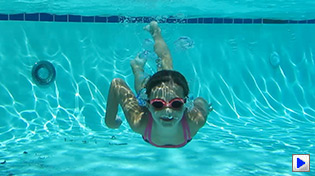 |
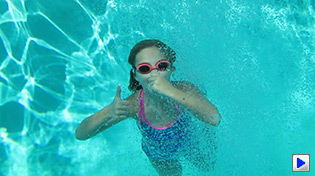 |
|
The Canon D20 produces very good overall video quality for a waterproof camera, with good exposure and colors. In the second of these two videos, there is quite a bit of Jell-o effect (rolling shutter), which is the wobble of the picture itself as the camera moves back and forth due to the movement of the water. But for this class of camera, that is really the only complaint on the video side, so keep the camera as steady as you can and shoot away.
|
Nikon AW110 - Video Quality (1080, 30p, MOV format) |
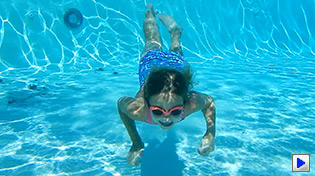 |
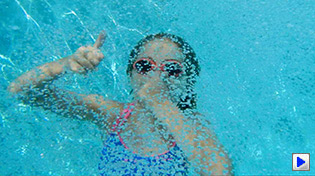 |
The AW110 produces reasonably good video, with good exposure and a slight tendency towards the blue end of the color spectrum. We found that the lens hood tended to trap air bubbles inside of it while we were submerging the camera, as is evident on the first video above, so be advised to try and remove them before capturing underwater clips. Also, as we've said earlier, the AW110 and the TS5 were the easiest cameras to accidentally block the lens with your finger, and you can see Dave's on display in the first video (towards the end of the clip). |
Olympus TG-2 - Video Quality (1080, 30p, MOV format) |
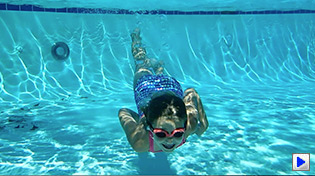 |
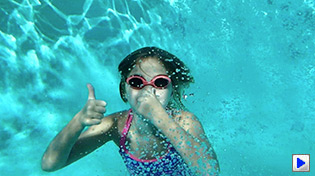 |
The TG-2 delivers odd artifacts at times, most prominently as fragmented pixelation that's visible during the first few seconds of the first clip, and again at the end. The video breaks up temporarily and then smooths back out. As we saw with the camera's still images, the TG-2's video contrast is quite good, but the auto white balance tends to make the sky slightly purple. Overall, we found the TG-2 to be towards the bottom of the scale here for video quality in this class due to its fragmenting tendencies.
|
Panasonic TS5 - Video Quality (1080, 60p, AVCHD format) |
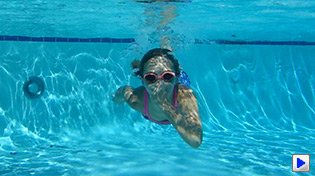 |
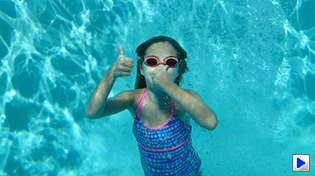 |
We found that the TS5 produces somewhat choppy videos in MP4 format, displaying similar fragmented artifacts as the TG-2. But using the AVCHD video format at 60p, we found the video to be much better and smoother, with good detail. You can zoom while recording, but the camera's AF system can't keep up until you've reached your desired focal length. So, overall, we rate the TS5's video to be pretty good as long as you film at 1080p/60p. We can't recommend shooting MP4s, even though they're more Web friendly for sharing.
|
Pentax WG-3 - Video Quality (1080, 24p, MOV format) |
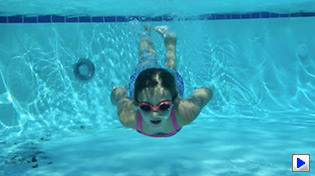 |
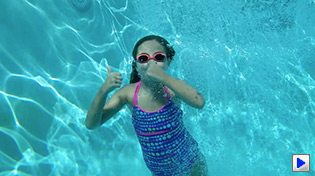 |
|
The WG-3 video is less sharp than the other cameras, similar to its still image quality. Exposure is reasonably good, but the auto white balance yields a slight purple tint to the sky as we saw with the TG-2.
|
Sony TX30 - Video Quality (1080, 60i, AVCHD format) |
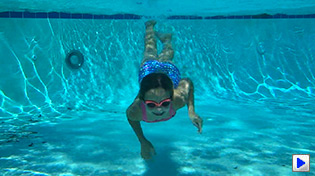 |
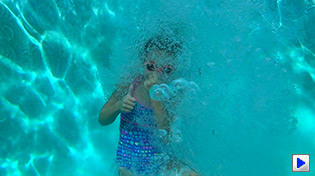 |
|
The TX30's video image quality in MP4 format at 30p proved to be fairly good -- even though it's recorded at 1440x1080 resolution (rather than 1920x1080) -- with somewhat sharper results than some of the others, as well as good contrast. In AVCHD format at 60i (above), the TX30 also produced good results with nice color, and autofocusing kept decent pace while zooming during filming. Be careful when playing back the 60i video on your computer or mobile device, as it may render well if you don't have a well-matched interlaced setting. Unfortunately for the TX30, its super small body and the limits of its OLED touchscreen make it very difficult to use and frame while underwater, and to keep stray fingers from inadvertently slipping into the frame.
|
Overall Underwater Video Ranking |
#1
Canon D20 |
#2
Panasonic TS5 |
#3
Nikon AW110 |
#4
Sony TX30 |
#5
Pentax WG-3 |
#6
Olympus TG-2 |
Underwater Video Ranking: Although there is some noticeable Jell-o-effect (wobble) while moving the camera at times, and it has the slowest frame rate, the D20 produces the most consistently pleasing videos of the bunch. The TS5 and its 60p frame rate in AVCHD made nice movies, smoother than the rest, though the camera's MP4s were problematic. The AW110 also rated fairly good with underwater video as long as you can avoid blocking the lens with a stray finger (we were unable to avoid it). We ranked the TX30 fourth based on its video skills; though the quality ranked as good in both AVCHD and MP4 formats, it's hard to make movies underwater when you can't see or operate the touchscreen. The remaining two cameras were OK at best at recording movies underwater.
|
"Dry Land" Image Quality

Shooting underwater is addictive, but waterproof cameras aren't solely designed for the water. Their rugged design makes them perfect for a variety of action sports and life adventures, as well as able to hold up to the punishment your kids may dish out on them in casual use at home or on vacation. As such, they're also meant to be used on dry land, so we have captured a host of shots -- taken in full sunlight and in low-light situations -- so you can see how their terrestrial image quality stacks up.
To make things simple, and to simulate how we believe most consumers would use them, we kept the cameras in Auto mode for our portrait tests, although most of these cameras do provide portrait modes that may achieve different results. We also shot a series of images that show off the camera's zoom range -- and the difference in quality between wide-angle and telephoto -- as well as some night-time shots lit solely by a sparkler and the camera's flash - if it fired.
Portraits
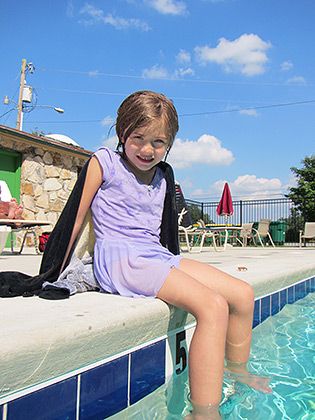 |
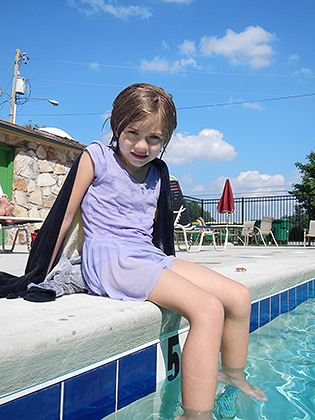 |
Canon D20
f/8, 1/320s, ISO 200 |
Nikon AW110
f/3.9 1/1250s, ISO 125 |
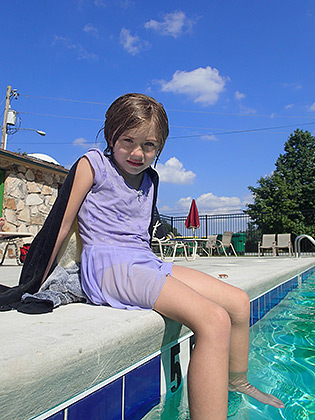 |
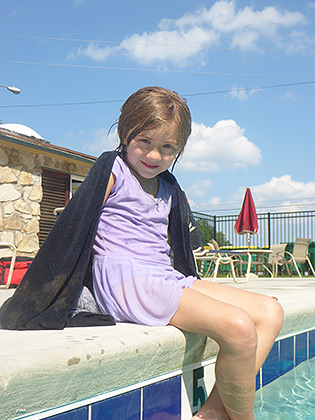 |
Olympus TG-2
f/9, 1/250s, ISO 100 |
Panasonic TS5
f/4.3, 1/640s, ISO 100 |
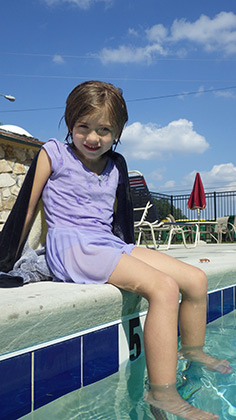 |
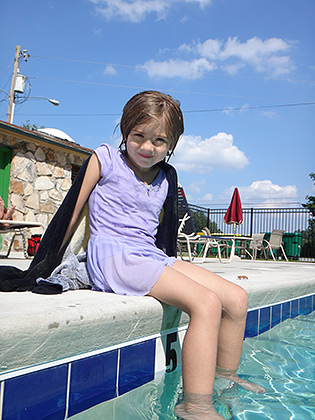 |
Pentax WG2
f/10.1, 1/200s, ISO 125 |
Sony TX30
f/4.5, 1/500s, ISO 80 |
|
The D20 turned in the most pleasing poolside shots, producing warm skin tones and good exposure while striking a good balance between contrast and dynamic range. The AW110 also fared well, although it didn't deliver warm skin tones in Auto mode. The TG-2 produced images that were very different than the rest, with the same high contrast we saw in the underwater shots, and a very deep, almost purple hue to the sky which some may prefer to a more accurate rendition. The TS5 delivers quite the opposite results, yielding rather flat and somewhat washed-out images. For portraiture, this actually could be appealing to some, especially if you like high-key type results. Again, the WG-3 defaults to a 16:9 aspect ratio, so we've displayed that here. We don't find 16:9 particularly good for a portrait, so best to dial in 4:3 before shooting with this one. Terrestrial image quality from this camera rated only fair. Last but not least, the TX30 delivers a very nice image overall, with good exposure and color.
|
Wide and Telephoto Landscapes
Compact cameras tend to yield crisper photos at wide angle, but most shooters will no doubt use their camera's zoom functionality a lot. Below we give you comparison examples of the extremes on either side of the zoom range from each model. We chose a tranquil lake scene on a pleasant day, and then zoomed in on an interesting-looking fallen tree, again using standard Auto mode. We found it interesting just how different the quality can vary for some models between their wide and telephoto ranges.
Canon D20 |
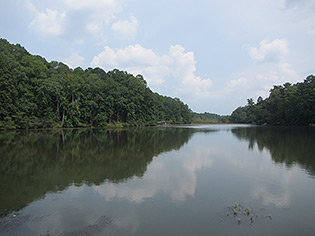 |
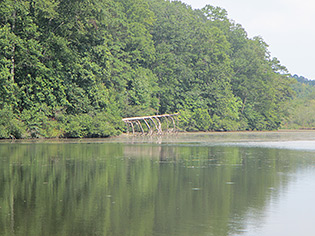 |
Wide (28mm eq.)
f/8, 1/320s, ISO 160
|
Tele 5x (140mm eq.)
f/4.8, 1/320s, ISO 200 |
|
The D20 turns in an average performance with these shots. Wide angle is good, but a bit soft, and at full tele there is an almost hazy quality when viewing at full resolution -- and, as you can see from some of the other cameras, this was not a hazy day, and the lenses on all cameras were kept clean as possible.
|
Nikon AW110 |
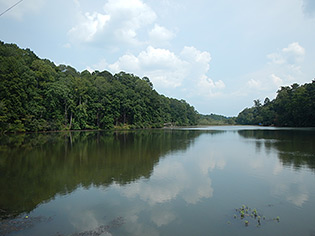 |
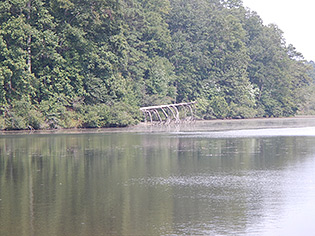 |
Wide (28mm eq.)
f/3.9, 1/1250s, ISO 125
|
Tele 5x (140mm eq.)
f/4.8, 1/250s, ISO 125 |
Wide-angle landscapes from the AW110 look nice, with really good colors and decent detail. At full tele the shots became overblown and washed out -- so you may want to be careful when zooming out.
|
Olympus TG-2 |
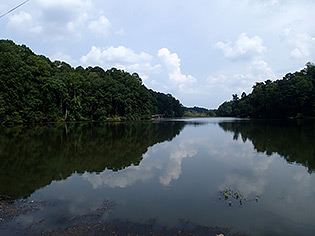 |
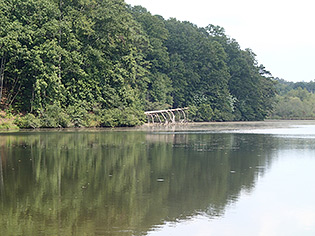 |
Wide (25mm eq.)
f/8, 1/320s, ISO 100
|
Tele 4x (100mm eq.)
f/4.9, 1/250s, ISO 100 |
As in most all other situations, the TG-2 delivers more contrast in its images than its competitors, and it shifts cyan toward darker blue. This can have very pleasing effects for the right situations, and we rather like both of these landscape shots with the high contrast, though the wide angle shot is slightly underexposed. The telephoto shot here shows nice detail, but at a closer glance it does appear a bit processed. Still, not a bad job here by the TG-2 in comparison to some.
|
Panasonic TS5 |
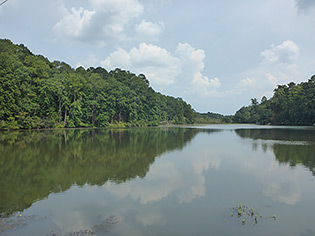 |
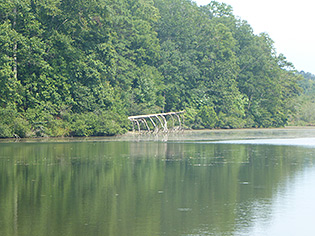 |
Wide (28mm eq.)
f/10, 1/250s, ISO 200 |
Tele 4.6x (128mm eq.)
f/5.9, 1/125s, ISO 100 |
The TS5 produced the best dynamic range in its wide-angle shots. Notice the detail in the treeline as compared to how much darker it appears in some, and how good a job the camera does with rendering the clouds. This is more in line with the way the shot actually looked to the eye. At full tele, unfortunately, there is a lack of clarity and detail, but you'll need to click on the above image to see these issues more clearly.
|
Pentax WG-3 |
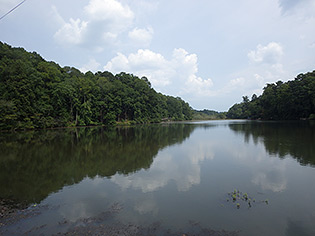 |
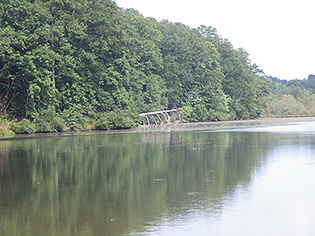 |
Wide (25mm eq.)
f/7.9, 1/320s, ISO 125 |
Tele 4x (100mm eq.)
f/6.5, 1/160s, ISO 125 |
|
The WG-3 image here at wide angle is actually fairly good, and does a reasonable job of portraying the scene as it actually looks. At 4x zoom, however, it's a bit overblown and washed out.
|
Sony TX30 |
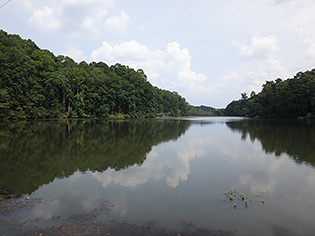 |
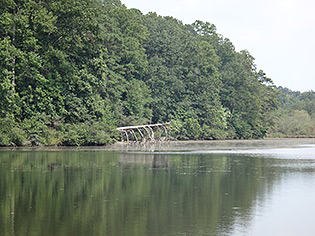 |
Wide (26mm eq.)
f/4.5, 1/640s, ISO 80 |
Tele 5x (130mm eq.)
f/4.8, 1/200s, ISO 80 |
|
The TX30 produces the most solid, crisp images at full telephoto in this comparison. There is more detail in the fallen tree as well as in the treeline than on any other waterproof camera in our test. the camera also fares well at wide angle, though there is some distortion in the corners.
|
Low Light
Low-light situations have never been the strong suit of compact cameras with small sensors, that's for sure. But when toting along a tough camera on vacation, there are often plenty of opportunities -- sitting beside the campfire or walking on the beach after sunset (or 40 feet underwater, for that matter) -- when you need to capture a low-light shot. Below are low-light examples from each waterproof model we tested. These smaller crops only tell part of the tale; be sure to click on each to see the full resolution image in all of its glory (or, in some cases, not-so-much glory). We shot in Auto mode and also used whatever special night mode the cameras had (though we did not use any multi-shot modes), and then chose the best each camera had to offer to display in the tables below.
 |
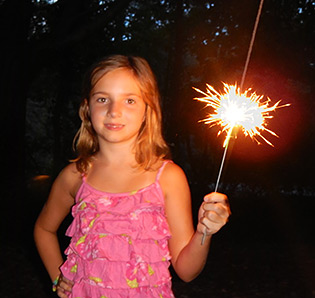 |
Canon D20 (Auto mode)
f/3.9, 1/60s, ISO 800, flash fired |
Nikon AW100 (Night Portrait mode)
f/4, 1/30s, ISO 200, flash fired
|
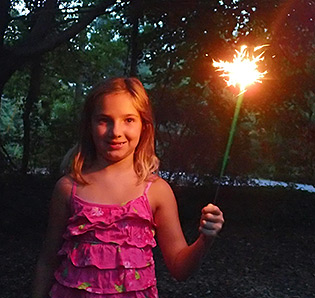 |
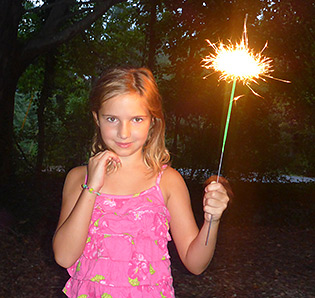 |
Olympus TG-2 (Night Portrait mode)
f/2.7, 1/20s, ISO 2500, flash did not fire |
Panasonic TS5 (Night Portrait mode)
f/3.9, 0.3s, ISO 500, flash fired
|
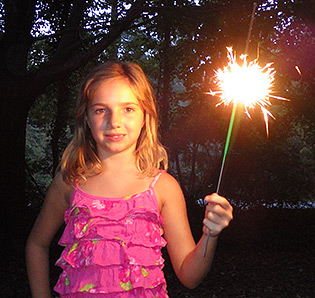 |
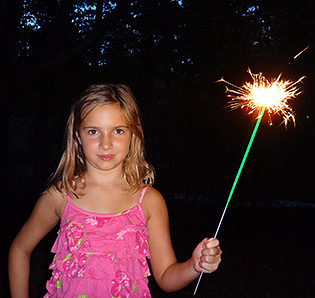 |
|
Pentax WG-3 (Night Scene Portrait)
f/2.8, 1/8, ISO 1600, flash fired
|
Sony TX30 (Superior Auto mode)
f/3.5, 1/13s, ISO 400, flash fired
|
|
Both the D20 and the TX30 produced good results considering the limitations of this type of camera. Each kept the ISO at a reasonable level and the results are at least good enough for a nice printed 5x7 for the kinfolk. The TS5 also did well, balancing flash exposure of our darling subject nicely with the background. None of the others fared as well. We couldn't coax the AW110 into delivering a crisp image in either setting, the TG-2 chose ISO 2500 (bad idea) instead of opting to fire a flash, and the WG-3 delivered only noisy images (we chose the least noisy to show you here). Obviously one could select Program mode and adjust flash and/or ISO settings to get better results depending on the camera and/or the situation, but again we wanted to show you mostly what these cameras are capable of delivering in either Auto or some easily accessible specialty mode. In this test, only the D20, TX30 and TS5 passed.
|
Overall "Dry Land" Still Image Ranking |
#1
Sony TX30
|
#2
Canon D20 |
#3
Olympus TG-2 |
#4
Nikon AW110 |
#5
Panasonic TS5 |
#6
Pentax WG-3 |
|
This was a tight race between the D20 and the TX30 for best "dry land" camera, so we decided to give the nod to the TX30 since it came in so strongly in the zoom category, while also delivering good portraits and low-light images. This is especially worth noting for anyone interested in a TX30 who intends mostly terrestrial shooting, as it is obviously a very capable shooter and doesn't suffer the issues it had below water. The TG-2 took solid third place primarily with its solid performance in the zoom table, while all of the other cameras had some issue or another in one or more of the test comparisons and therefore rate as average in image quality for dry-land shooting.
|

Follow Imaging Resource: